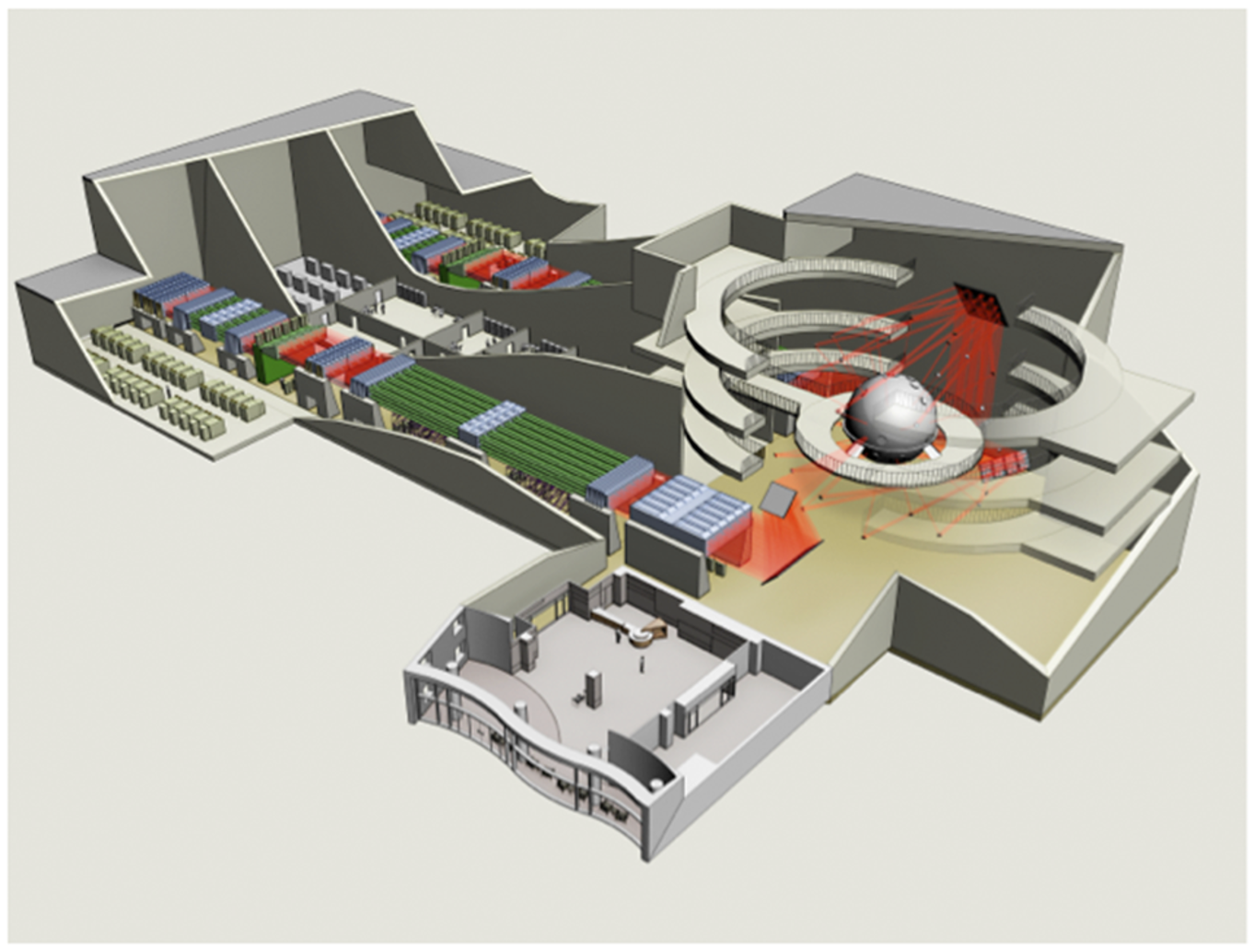European scientists are reinvigorating pan-European plans for laser fusion energy.
Motivated by historic results at the National Ignition Facility (NIF) in the U.S., a new facility will concentrate on inertial confinement fusion (ICF), but distinct from U.S. activities it will focus on ‘Direct Drive’ as the preferred path towards commercially viable fusion energy.
HB11 Energy, which is also pursuing a direct-drive approach for laser boron fusion, supports these activities.
The new HiPER+ consortium of European scientists recently shared a ‘roadmap’ that aims to address the technological challenges related to the development of future laser fusion reactors.
The demonstration of ignition and gain during experiments at the NIF was a historical breakthrough that validated the ICF approach and has been repeated in several experiments. At NIF, about 2 MJ of laser energy was used to induce the compression and heating of 1 mg of a cryogenic ice of deuterium and tritium, thereby triggering nuclear fusion reactions, which produced neutrons and alpha particles releasing more than 3 MJ of fusion energy.
Indirect Drive vs. Direct Drive ICF
NIF used the indirect drive approach, in which laser beams are focused inside a cavity of a hohlraum containing the target, which subsequently produces X-rays to drive an implosion. This approach has been important for the demonstration of ignition as it guarantees a high degree of uniformity of the radiation and hence the possibility of performing quality spherical implosions.

However, it will not meet the requirements needed for the development of future fusion power plants, which will need to provide much higher gain from fusion reactions, simpler targets and will need to operate at a high repetition rate. That’s why it’s now timely to progress beyond the NIF results.
The direct drive approach focusses laser beams that are directly on the target to achieve its implosion. This scheme is both simpler (thereby more easily scalable to high repetition) and more efficient, because it avoids the intermediate step of conversion to X-rays. The main problem of direct drive is that any non-uniformity of irradiation associated with the laser beams, directly induces the growth of hydrodynamic instabilities. In turn, this distorts the target and prevents the achievement of perfectly spherical implosions.
Secondly, the technological challenges related to future fusion reactors needs to be addressed. These include: the development of high-energy laser systems, which have a much higher efficiency and can operate at high repetition frequency (≥ 1 Hz); the development of a technology for realising targets at low cost; the study of materials that can withstand high neutron irradiation; and research into how best to efficiently produce the tritium needed as fuel.
These are the goals of the HiPER+ collaboration, consisting of the most experienced and active European scientists in the field of ICF. Presently these include D. Batani, A. Colaïtis, F. Consoli, C.N. Danson, L.A. Gizzi, J. Honrubia, T. Kühl, S. Le Pape, J.-L. Miquel, J.M. Perlado, R.H.H. Scott, M. Tatarakis, V. Tikhonchuk and L. Volpe.
Caption on featured image
Figure 2. HiPER original concept of the ICF power plant

